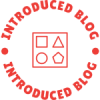Creating a home gym can be an exciting and rewarding endeavor, especially for beginners looking to enhance their fitness journey. The convenience of working out at home, coupled with the ability to tailor your environment to your preferences, makes it an attractive option. However, the question arises: What do I need for a beginner home gym? This article will guide you through the essential equipment, space considerations, and tips to help you establish a functional and effective home gym.
- Assessing Your Space
Before diving into equipment selection, it’s crucial to evaluate the space you have available. Whether you have a dedicated room, a garage, or simply a corner in your living area, understanding your space will help you make informed decisions about the equipment you can accommodate. Here are some factors to consider:
- Flooring: Ensure that the flooring can handle the weight of your equipment and is suitable for workouts. Rubber mats are an excellent choice for protecting your floors and providing traction.
- Ceiling Height: If you plan to incorporate exercises that require overhead movements (like pull-ups or overhead presses), ensure your ceiling height is adequate.
- Ventilation and Lighting: A well-ventilated and well-lit space can significantly enhance your workout experience.
- Essential Equipment for Beginners
When starting a home gym, it’s important to invest in versatile and functional equipment that caters to a variety of workouts. Here’s a list of essential items to consider:
a. Dumbbells
Dumbbells are a staple in any home gym due to their versatility. They can be used for strength training, endurance workouts, and even rehabilitation exercises. For beginners, a set of adjustable dumbbells can save space and provide a range of weights as you progress.
b. Resistance Bands
Resistance bands are an excellent addition for beginners, offering a low-impact way to build strength and flexibility. They are portable, affordable, and can be used for a variety of exercises targeting different muscle groups.
c. Stability Ball
A stability ball can enhance core strength and stability while also being used for various exercises, including squats, push-ups, and stretches. It’s an excellent tool for improving balance and coordination.
d. Jump Rope
A jump rope is a fantastic piece of cardio equipment that can easily fit into any home gym. It’s effective for improving cardiovascular fitness, coordination, and agility, and it requires minimal space.
e. Yoga Mat
For those who enjoy stretching, yoga, or bodyweight exercises, a high-quality yoga mat is essential. It provides cushioning and support for your joints while also offering a non-slip surface for various workouts.
f. Kettlebell
Kettlebells are versatile tools that can be used for strength training, cardio, and functional fitness. They allow for dynamic movements that engage multiple muscle groups, making them a valuable addition to your home gym.
- Optional Equipment for Enhanced Workouts
Once you have the essentials, you may want to consider additional equipment to diversify your workouts:
- Barbell and Weight Plates: If you’re serious about strength training, a barbell set can provide more options for heavy lifting.
- Pull-Up Bar: A pull-up bar can be mounted in a doorway and is excellent for upper body strength training.
- Cardio Machine: If space and budget allow, consider adding a treadmill, stationary bike, or elliptical for dedicated cardio workouts.
- Creating a Workout Plan
Having the right equipment is only part of the equation. To maximize your home gym experience, it’s essential to create a structured workout plan. Here are some tips:
- Set Clear Goals: Determine what you want to achieve—whether it’s weight loss, muscle gain, or improved endurance—and tailor your workouts accordingly.
- Incorporate Variety: Mix strength training, cardio, and flexibility exercises to keep your routine engaging and well-rounded.
- Schedule Workouts: Consistency is key. Set aside specific times for your workouts to establish a routine.
- Staying Motivated
Working out at home can sometimes lead to distractions or a lack of motivation. Here are some strategies to stay focused:
- Create a Dedicated Space: Make your home gym inviting and free from distractions. Personalize it with motivational quotes or images.
- Track Your Progress: Keep a workout journal or use fitness apps to track your progress and celebrate milestones.
- Join Online Communities: Engage with online fitness communities or social media groups to share your journey and gain inspiration from others.
Conclusion
Building a beginner home gym is a fulfilling project that can significantly enhance your fitness journey. By carefully selecting essential equipment, creating a structured workout plan, and staying motivated, you can create an effective and enjoyable workout environment. Remember, the key to success is consistency and adaptability—so embrace the journey and enjoy the process of becoming fitter and healthier in the comfort of your own home.
